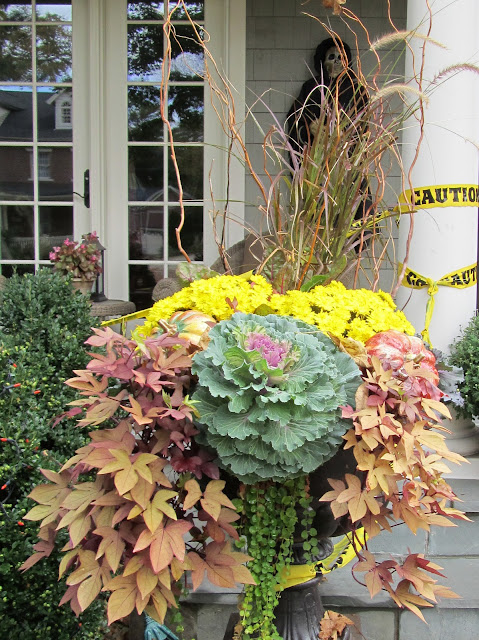This is the children's table, sort of mid century with Jadite, Ruby Red Glassware and McCoy pottery. I like to use my collectibles instead of having them on a shelf to look at. The McCoy vase was from 1948.

This is the Shell Pattern produced by Anchor Hocking from the 30's to the 70's. This was produced in the 60's. The Royal Ruby Glass was also produced by Anchor Hocking in the 40's and 50's.
Ruby Red Glassware by Anchor Hocking
I love the colors that show up inside the cabbages after some time being exposed to the cooler weather.
This year, I am all decorated outside and inside, have made apple pies (with Cortland apples from Door County, Wisconsin), chocolate cake and brownies. I have also made what I call "kids lasagna," and barbecued ribs. Of course, we will have appetizers, salad, homemade feather rolls (from the Fannie Farmer Cookbook) and garlic bread. It's a lot of comfort food this weekend.
Pies can be made ahead of time uncooked and frozen. Put in the oven frozen at 400 degrees and cook for approximately 45 minutes.
Solomon's Seal
Peacock Cabbage
The kids lasagna was a recipe from my former neighbor (who has left us way too young) that all of the kids and grownups loved. It is quite a departure from the Italian version, but I feel I must share it with you since my granddaughter insisted I make it for Halloween:
1 lb. of ground beef
1 large can of crushed tomatoes
1 large can of tomato paste
1 medium onion
2 cloves of crushed garlic
1 teaspoon each of basil, oregano and parsley (fresh is better if you have
any left in the garden)
1 package of Swiss cheese, 12 oz or 16 oz
16 oz carton of small curd cottage cheese
16 oz package of no yolk egg noodles broad, cooked, rinsed and drained
Salt and pepper to taste
Parmesan Cheese shredded
The lasagna has been frozen uncooked ready to put in the oven at 350 degrees for 45 minutes to one hour until lightly brown and bubbly.
Brown beef, onion and garlic, add tomatoes, paste and herbs, salt and pepper to taste. Boil noodles, rinse, layer half on bottom of 9x13 pan, layer half of beef mixture, layer half of Swiss cheese, half of cottage cheese and repeat whole process beginning again with noodles, sprinkle top with Parmesan cheese, cook at 350 degrees until bubbling and Parmesan is light brown.
Have a BOOtiful weekend!





















































